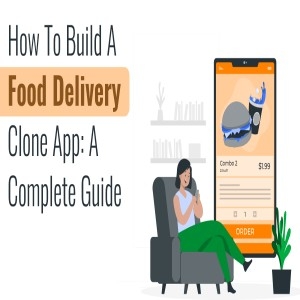How to Build a Food Delivery Clone App: A Complete GuidePosted by Smith Joe on May 15th, 2024  In today's fast-paced world, the demand for convenient food delivery services is at an all-time high. Whether it's due to busy schedules or the convenience of ordering from home, food delivery apps have become an integral part of modern life. If you're looking to capitalize on this trend by creating your own food delivery app, you've come to the right place. In this comprehensive guide, we'll walk you through the step-by-step process of building a food delivery clone app from start to finish. Understanding the MarketBefore diving into the development process, it's crucial to understand the current landscape of the online food delivery app script market. Conduct thorough research to identify key players, target demographics, and emerging trends. Analyze competitor apps to gain insights into their features, user experience, and monetization strategies. By understanding the market, you can identify opportunities for differentiation and innovation in your own app. Defining Your Unique Selling Proposition (USP)With a crowded market, it's essential to define what sets your food delivery app apart from the competition. Whether it's offering unique cuisine options, faster delivery times, or innovative features, your app needs a compelling USP to attract users. Consider conducting surveys or focus groups to gather feedback and validate your USP before moving forward with development. Choosing the Right Technology StackThe success of your food delivery app depends heavily on the technology stack you choose. From front-end development frameworks to back-end servers and databases, each component plays a crucial role in delivering a seamless user experience. Consider factors such as scalability, security, and compatibility when selecting your technology stack. Popular choices include React Native for cross-platform development, Node.js for backend services, and MongoDB for database management. Designing the User Interface (UI) and User Experience (UX)The UI/UX of your app plays a significant role in determining its success. Aim for a clean and intuitive design that makes it easy for users to browse restaurants, place orders, and track deliveries. Pay attention to details such as color scheme, typography, and navigation flow to create a visually appealing and user-friendly experience. Conduct usability testing to gather feedback and iterate on your designs until you achieve optimal results. Implementing Essential FeaturesWhen building a food delivery clone app, it's essential to include all the essential features that users expect. These may include: User Registration and AuthenticationAllow users to create accounts, log in securely, and manage their profiles. Implement authentication measures such as email verification or two-factor authentication to enhance security. Restaurant Listings and MenusProvide a comprehensive directory of restaurants, complete with menus, pricing, and reviews. Allow users to filter and search for restaurants based on cuisine type, location, or ratings. Ordering and Payment ProcessingEnable users to place orders directly from the app and choose from various payment options, including credit/debit cards, mobile wallets, and cash on delivery. Implement secure payment gateways to ensure the safety of transactions. Real-Time Order TrackingKeep users informed about the status of their orders with real-time tracking updates. Provide estimated delivery times and notifications for order confirmation, dispatch, and delivery. Reviews and RatingsEncourage users to leave reviews and ratings for restaurants and delivery services. Use this feedback to improve the quality of service and enhance customer satisfaction. Testing and Quality AssuranceBefore launching your app, it's crucial to conduct thorough testing to ensure that it functions flawlessly across different devices and operating systems. Test for bugs, glitches, and performance issues, and address any issues promptly. Consider beta testing with a small group of users to gather feedback and make final adjustments before the official launch. Launch and Marketing StrategyOnce your app is ready, it's time to launch it to the public. Develop a comprehensive marketing strategy to promote your app and attract users. Utilize various channels such as social media, email marketing, and influencer partnerships to generate buzz and drive downloads. Consider offering promotional discounts or incentives to encourage early adoption. ConclusionBuilding a food delivery clone app requires careful planning, execution, and attention to detail. By following the steps outlined in this guide, you can create a successful app that meets the needs of today's on-the-go consumers. Remember to stay agile and adaptable, continuously monitoring market trends and user feedback to evolve and improve your app over time. With dedication and perseverance, you can carve out your niche in the competitive world of food delivery app script and achieve long-term success. Like it? Share it!More by this author |


